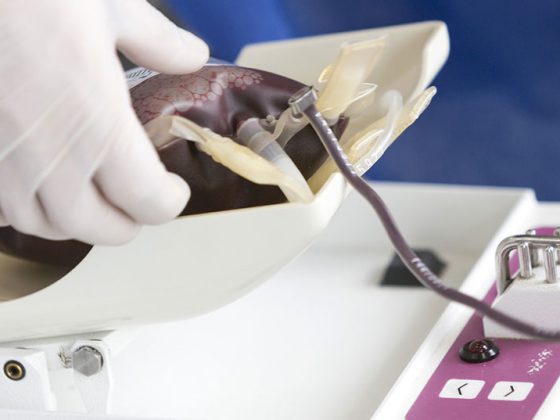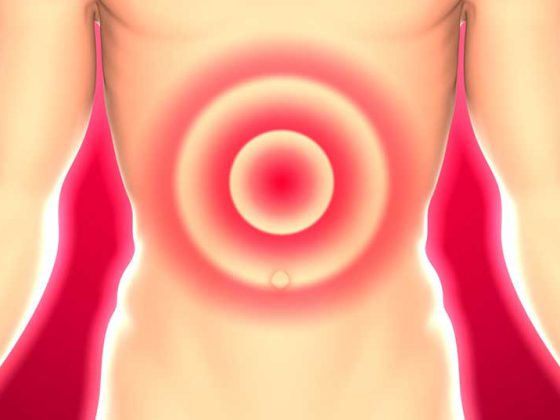Subclinical hypothyroidism is usually a laboratory diagnosis without significant symptoms and is defined by an elevated TSH with normal levels of free T3 and free T4. In laboratory controls after 2-3 months, spontaneous normalization is found in 50% of cases. This does not make the recognition and treatment of hypothyroidism easy.
In subclinical hypothyroidism, the thyroid gland still produces sufficient hormones (free T4), but the drive by the pituitary gland is increased (increase in FSH). With persistently elevated TSH levels, subclinical hypothyroidism is associated with evidence of thyroid-specific antibodies in the sense of autoimmune thyroiditis. This constellation is common in old age. Depending on the definition, 8-18% of all seniors have subclinical hypothyroidism, which is associated with several health problems, including fatigue, cardiovascular disease, muscle weakness, slowed thinking, hypertension, and obesity.
When interpreting the TSH elevation, it must be taken into account that it physiologically increases with age. A TSH level above the reference range defined for the general population, up to about 8 mU/l, is considered normal for the elderly. Some studies also suggest that a slightly elevated TSH level is associated with lower morbidity in the elderly. However, patients with a serum TSH >10 mU/l have a high risk of developing manifest hypothyroidism with low serum free T4 levels within the next 10 years. Epidemiological studies show that those affected have an increased risk of coronary heart disease and premature death. However, age-related standard values do not yet exist.
Early initiation of therapy or wait and see?
However, the proof that thyroid treatment protects patients – especially the elderly affected – from the consequences is still pending. In a study with a large group of seniors, treatment with L-thyroxine was compared to placebo over a five-year period. Hormone replacement achieved its biochemical goal: TSH levels dropped rapidly on L-thyroxine therapy and were 3.63 mIU/l after 12 months. This value was maintained by the patients who were followed up after a total of five years. Taking one tablet of L-thyroxine once a day, which is usually without side effects, is accepted by most patients. However, no improvement in well-being, as assessed by a “Hypothyroid Symptoms Score” and a “Tiredness Score”, could be detected. The values in both scores hardly changed. There was also no discernible placebo effect. At the same time, the therapy with L-thyroxine did not have any negative consequences for health. Serious complications such as atrial fibrillation, heart failure, bone fractures, or new diagnosis of osteoporosis were not diagnosed more frequently during treatment with L-thyroxine than in the placebo group.
Special attention during pregnancy
One group in which diagnostics and therapy require special sensitivity is pregnant women. Here, with mother and child, two different individuals have to be treated. Variable target values and dosages related to gestational age must be considered. The diagnosis of thyroid dysfunction is still not included in the maternity guidelines. However, evaluations demonstrate that a significant increase in preterm birth rate is seen in pregnant women with hypothyroidism. Associations with miscarriage and gestational diabetes were also observed. That is already before a planned pregnancy the determination of the thyroid parameters is meaningful, in order to recognize and treat still before pregnancy entrance possible thyroid function disturbances. The therapy of hypothyroidism both in non-pregnant women and during pregnancy consists in most cases in the substitution of L-thyroxine. It should be noted that the dose often needs to be adjusted several times during pregnancy, which requires regular monitoring of thyroid function.
Further reading:
- Meyer R: Subclinical hypothyroidism: therapy merely “laboratory cosmetics”. Dtsch Ärzteblatt 2017; 114(15): A-742/B-630/C-616.
- Stott DJ, Rondondi N, Kearny PM, et al: Thyroid Hormone Therapy for Older Adults with Subclinical Hypothyroidism. N Engl J Med 2017; 376: 2534-2544.
- www.msdmanuals.com/de-de/profi/endokrine-und-metabolische-krankheiten/schilddrüsenerkrankungen/hypothyreose
- Ruderich F, Feldkamp J: Subclinical hypothyroidism. Dtsch Med Wochenschr 2022; 147(06): 289-294.
- Pearce SHS, Razvi S, Yadegarfar ME, et al: Serum Thyroid Function, Mortality and Disability in Advanced Old Age: The Newcastle 85+ Study. J Clin Endocrinol Metab 2016; 101: 4385-4394.
- Surks MI, Hollowell JG: Age-specific distribution of serum thyrotropin and antithyroid antibodies in the US population: implications for the prevalence of subclinical hypothyroidism. J Clin Endocrinol Metab 2007; 92: 4575-4582.
- Kirschner W, Jückstock J, Henrich W: Subclinical hypothyroidism increases the risk of miscarriage, preterm delivery, and gestational diabetes. Gynecologist 2021; 5: 326-333.
CARDIOVASC 2022; 21(2): 34











